By Matthew Hellon, Senior Research Executive, Northstar Research
Views expressed are the author’s own.
CONTACT
hello@stagwellglobal.com
Marketing Frontiers is a series from Stagwell exploring the methods, mediums, and messes modern marketers will grapple with over the next decade as they chart transformation in the discipline. In February, Stagwell is exploring the rise of NFTs.
NFT craze is a strong case study in three behavioral psychology concepts: Scarcity, Social Proof, and Signaling.
Marketers who leverage these concepts to drive NFT adoption are poised for growth.
Marketing is all about creating value above and beyond a product or services’ inherent value. How can I charge more for my bottle of water that’s basically the same as the one right next to it?
NFTs are perfect for studying marketing. Most NFTs have no inherent physical value. Most do not ‘do’ anything in the physical world (though some do have a physical component such as restaurant reservations or social clubs). Most can be copied with a simple screenshot or screen record. Their value is predicated on someone else wanting the same NFT.
So how do you get someone to buy something with no inherent physical value? Marketing and psychology.
This article is going to cover some of the psychological principles behind the current explosion of NFTs and the lessons they provide for marketers.
Scarcity
Scarcity is one of the most well-known economic and psychological principles. As supply decreases, demand increases. Humans tend to want resources that are difficult to obtain or are in short supply.
NFTs are an interesting case of scarcity because almost all NFT scarcity is artificial. Some of the best-selling NFTs are programmatically created (such as Bored Ape Yacht Club). They’re made using a computer program that varies several factors (facial expression, facial features, clothes etc.) to create different characters. It would be simple to create more characters or more copies of the same characters. They are not constrained by raw materials, production costs or distribution.
However, NFT producers limit their supply. In fact, their limited nature and sense of exclusivity is partly what makes them appealing despite it being entirely manufactured. NFTs have seemingly been able to avoid criticism for artificially constricting supply. This has often not been the case for brands selling physical products. Some speculated whether Nintendo’s supply problems during the launch of the Wii in 2006 were really production issues or a strategic play to drive up sales. High end fashion brands are often criticised for burning their unsold clothes to control their prevalence. Despite this, some brands, such as Supreme, have thrived by limiting stock and driving up demand.
The current culture around NFTs seems to allow brands to artificially constrain supply without much public backlash. However, this could quickly change, especially if consumers realize they’re bidding on something where supply is being artificially constricted.
As the world becomes even more digital, NFTs could become the ultimate signalling, luxury good. What’s better than a luxurious coat? A luxurious line of code.
Social Proof
More fuel to the NFT fire is social proof. Humans are social creatures. We’re heavily influenced by the behaviour of others, especially role models. NFT sellers have done a good job of breaking into celebrity culture. The list of celebrities owning NFTs is extensive (Eminem, Jimmy Fallon, Steph Curry etc.). This adds to their legitimacy (and drives up prices should they ever wish to sell their NFTs). YouTuber and boxer Logan Paul and businessman Gary Vee (9.7m and 22.1 mil Instagram followers respectively) have been extremely vocal about their NFT collections.
Those looking up to these celebrities are more likely to follow their lead and purchase NFTs for themselves. Abercrombie and Fitch used a similar strategy. They marketed to younger people. This in turn led to older people buying their products to stay ‘trendy’. NFTs that manage to get a celebrity sale will also get sales from other people looking to ride the hype train.
Signaling
Linked to social proof is signaling. We like to display our status. It helps us to judge ourselves and our in-group vs others. What better way to show that you’re an affluent, tech savvy, early adopter than to buy a digital image or video with no inherent value?
Many people buy NFTs and then share them on social media to show off their purchase, proof of the power of signaling. Signaling is the primary motivation behind many luxury goods. Further, many social acts such as voting and switching to electric vehicles are being encouraged through signaling such as ‘I voted’ stickers and green number plates respectively. As the world becomes even more digital, NFTs could become the ultimate signaling, luxury good. What’s better than a luxurious coat? A luxurious line of code.
Ultimately, people buy NFTs because they’re scarce, new, celebrities & business leaders are buying them, and they say something about the owner. Or, like cryptocurrencies, they’re bought simply to be sold later for a profit.
The future of NFTs is hard to predict. The housing market bubble leading up to 2008 popped partly because people realized the underlying value of the asset was far lower than was being portrayed. If everyone keeps believing in the value of NFTs, they will continue to prosper. However, even if the NFT bubble bursts, it’s been a quintessential lesson in how value can be created where there is none, with scarcity, social proof and signaling.
Matthew Hellon is a Senior Research Executive at Northstar Research Partners, a full-service global insights agency in the Stagwell network. Hellon was named Young Researcher of the Year in 2021 by the Market Research Society for his contributions at the intersection of marketing and behavioral science. Connect with Matthew on LinkedIn. 
Related
Articles
In the News, Marketing Frontiers, Press Releases
May 13, 2025
MULTIVIEW LAUNCHES AUDIENCEVIEW: THE ONLY FIRST-PARTY B2B AUDIENCE DISCOVERY PLATFORM FOR ASSOCIATION MEDIA
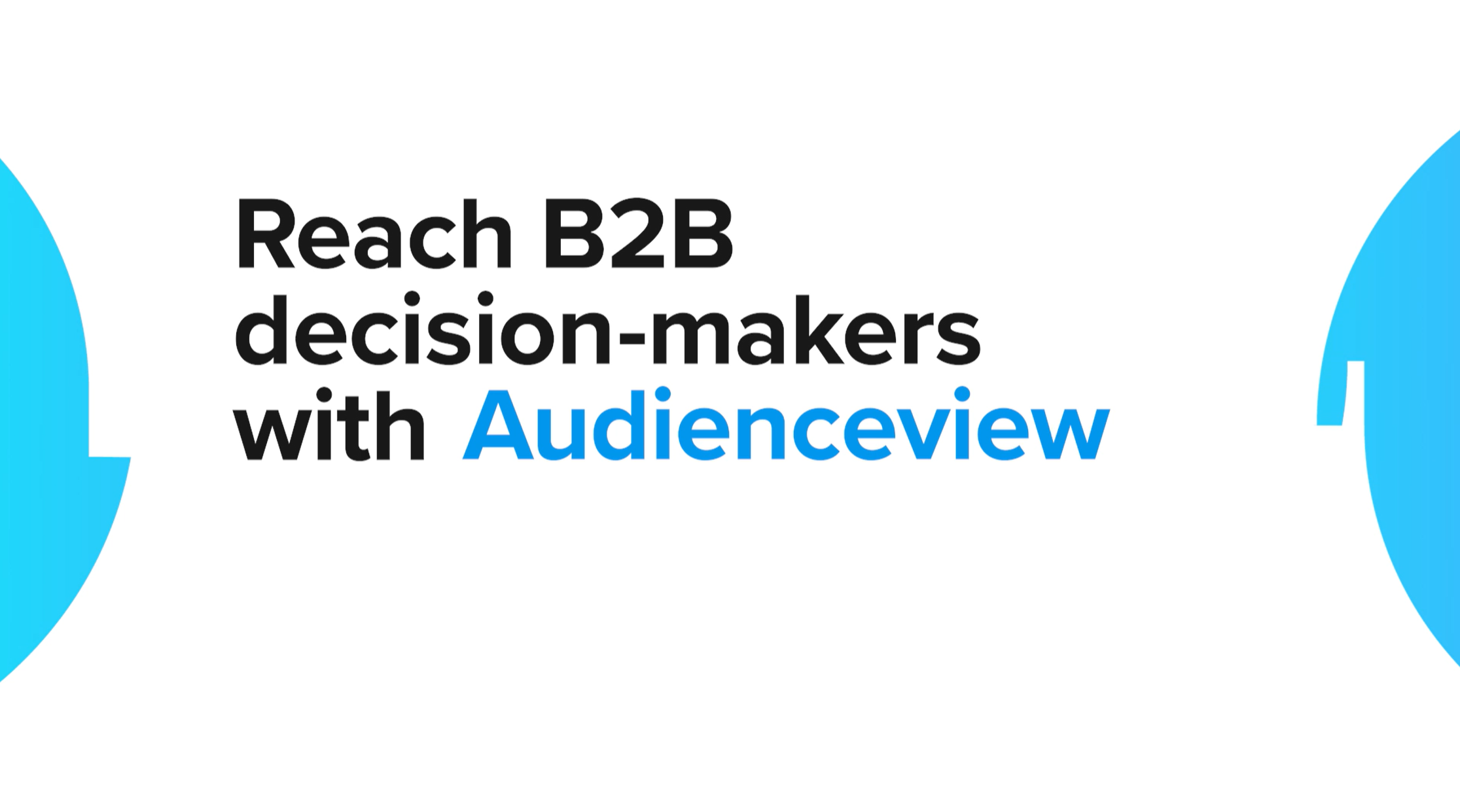
Events, In the News, Press Releases
May 13, 2025
Stagwell (STGW) Drafts New Picks for SPORT BEACH 2025: Lauren Betts, Myles Garrett, Billie Jean King, Ilona Maher, Brandon Marshall, Katie McCabe, Alex Morgan, Oscar Piastri, Gerard Piqué, Nigel Sylvester, Ian Wright OBE and More Confirmed to Attend
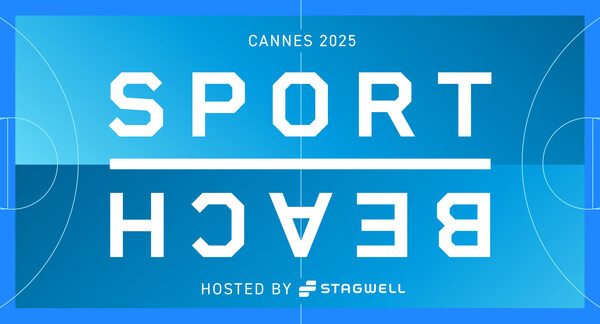
In the News, Investments & Financials, Press Releases
May 08, 2025
STAGWELL INC. (NASDAQ: STGW) REPORTS RESULTS FOR THE THREE MONTHS ENDED MARCH 31, 2025

Newsletter
Sign Up
By Mark Penn, Chairman and CEO, Stagwell
CONTACT
hello@stagwellglobal.com
FEATURING
Marketing Frontiers is a new series from Stagwell exploring the methods, mediums, and messes modern marketers will grapple with over the next decade as they chart transformation in the discipline. This February, Stagwell is exploring NFTs.
NFTS are an opportunity brands shouldn’t pass on.
Two strategies are driving value: incentivizing real-world action with NFTs, and using them to build loyal long-term consumer segments.
In the old days, marketing companies incentivized consumers with free toasters. Today, they give you an NFT, a digital good that may be even more useful. It’s easy to confuse the NFT craze with other emerging new technologies but they stand apart as offering several unique areas of potential value. First, they provide individually usable coupons or discounts that can be tracked; Second, they offer permanent digital copies of paper goods; and third, they offer collectible opportunities that could soar in value,
Brands want to experiment with NFTs but are struggling to determine whether it’s a fad or an effective long-term brand strategy. They must balance wanting to be first movers on exciting new tech that is racking up serious investment while pursuing virtual items as ways to connect digital and in-person experiences. But barriers make this investment difficult, including the expensiveness inherent in producing some types of NFTs, the wild fluctuation in selling prices, and the knowledge gap among consumers who are confused or otherwise skeptical about the technology.
While it’ll be a while before we can gauge the long-term impact of the NFT activations in the market now, it’s clear from early experiments that two styles of NFT activations are proving successful: those that connect digital incentives to real-world action, and those that help build long-term, loyal consumer segments for brands – either within or beyond their usual consumer base. Sports marketers and luxury fashion brands are leading the charge on effective NFT adoption.
NFTs are too important of an opportunity for today’s brands to pass on.
Incentivizing and Rewarding Real-World Action: Sports Brands
This Super Bowl, the NFL and Ticketmaster are partnering to provide in-person spectators free NFTS that commemorate their tickets and serve as digital keepsakes, giving an added boon to die-hard fans for their commitment to filling stadiums and solving for consumers who want a souvenir from the experience but are prone to losing ticket stubs. In addition to the free, wide-cast NFTs, a set of limited-edition tokens will be released to commemorate past Super Bowls hosted in the city of Los Angeles.
Giving consumers something meaningful for attending in-person events that taps into fandoms, hometown loyalty, and the desire to remember exciting experiences is one avenue of common-sense NFT adoption. These are not the flashy, expensive digital art being auctioned the NFT world is known for, but affordable, scaled and tied directly to an activity that fans have already shown engagement with: collecting stubs. These efforts teach a simple lesson about how to forge new paths with emerging technology: don’t reinvent the wheel; look for ways NFTs enhance or supplement existing real-world action.
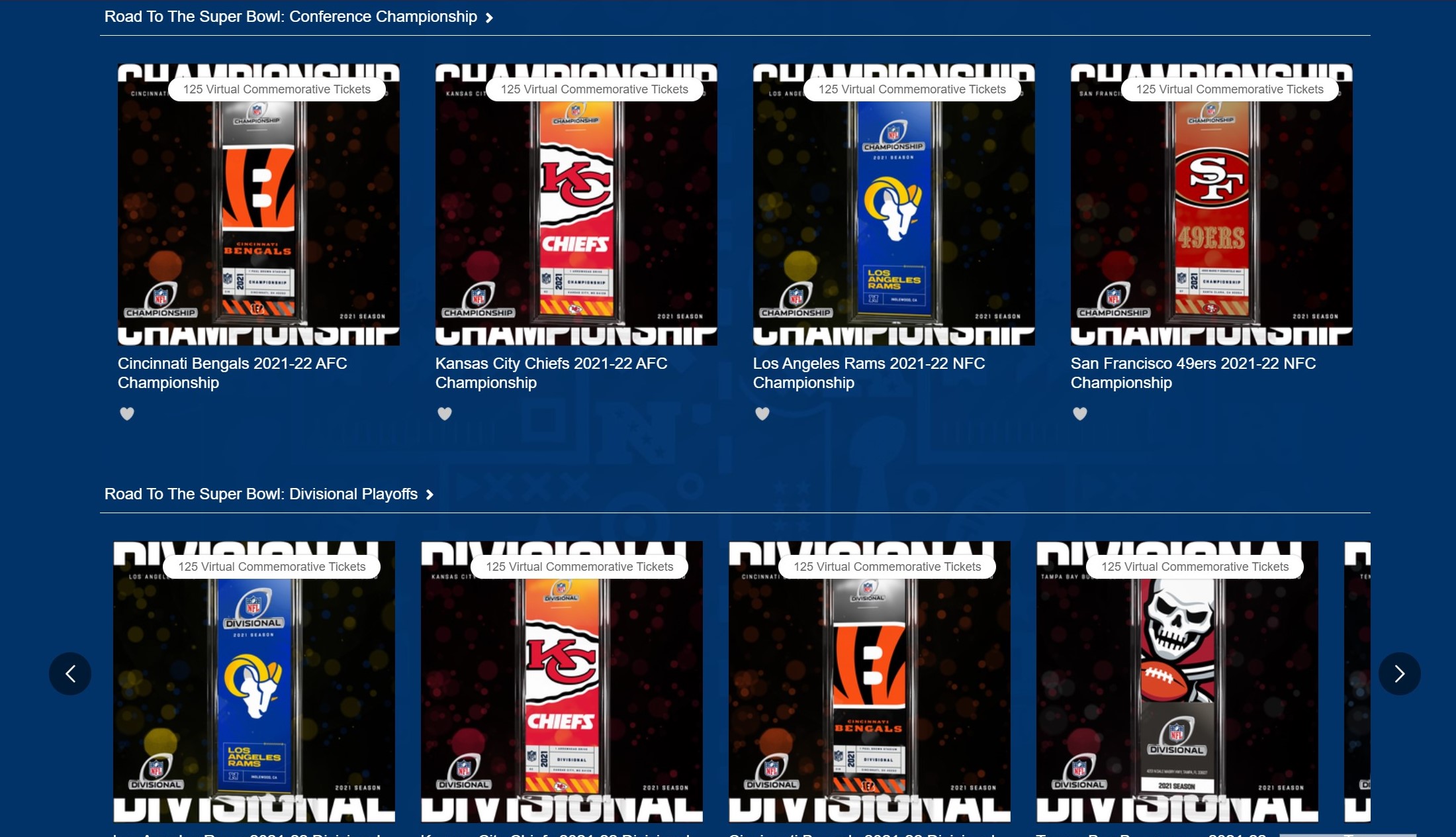
A screenshot of the N.F.L.’s Virtual Marketplace for NFTs and other collectibles.
Building Loyal Long-Term Consumer Segments: Luxury Fashion and Apparel Brands
NFL/Ticketmaster’s effort doubles as a window into how NFTs are tapping into supercharged fan bases to build long-term, loyal consumer segments. Beyond sports, luxury fashion brands use NFTs to engage up-and-coming, nascent consumer segments and prime them for long-term engagement. Louis Vuitton rolled out an adventure game commemorating its founder’s 200th anniversary birthday, featuring a selection of hidden NFTs and a set of ultimate prizes tied to exclusive, real-world offerings. And this year, NYFW goes virtual – presented by Decentraland, the popular Metaverse destination. Decentraland will host a digital component to NYFW that includes runway shows and immersive experiences, branded NFT collections, and other collectibles and digital tokens. These efforts engage a younger set of consumers who may not yet have the disposable income for luxury material purchases in real-life but are attracted to the exclusiveness of the brand and excited for the digital follow-through.
We think NFT’s are too important an opportunity for today’s brands to take a pass on. We believe every brand needs to play in the space in coming years and integrate NFTs into their campaigns. Fans want digital assets of their favorite players; traceable coupons make great targeted assets to enhance customer experience; and everyone loves to collect something that could be valuable.
Sign up to receive more insights from Stagwell and follow us on LinkedIn to stay abreast of news, work, and perspectives from our global network.
Related
Articles
In the News, Marketing Frontiers, Press Releases
May 13, 2025
MULTIVIEW LAUNCHES AUDIENCEVIEW: THE ONLY FIRST-PARTY B2B AUDIENCE DISCOVERY PLATFORM FOR ASSOCIATION MEDIA

Events, In the News, Press Releases
May 13, 2025
Stagwell (STGW) Drafts New Picks for SPORT BEACH 2025: Lauren Betts, Myles Garrett, Billie Jean King, Ilona Maher, Brandon Marshall, Katie McCabe, Alex Morgan, Oscar Piastri, Gerard Piqué, Nigel Sylvester, Ian Wright OBE and More Confirmed to Attend

In the News, Investments & Financials, Press Releases
May 08, 2025
STAGWELL INC. (NASDAQ: STGW) REPORTS RESULTS FOR THE THREE MONTHS ENDED MARCH 31, 2025

Newsletter
Sign Up
These days, good Super Bowl marketing is about more than the ad you run during the big game. Digital marketing’s rise emphasizes creative, omnichannel efforts that leverage emotional resonance and new storytelling mediums to drive business impact. Four key evolutions are changing the ways brands tackle this football tentpole:
- New Definitions of “Super Bowl Campaigns” leave brand marketers to ask: how do I run a Super Bowl campaign that’s more than just the ad?
- New Experiments in Cutting Edge Tech driving powerful new creative dimensions to the consumer experience at and around The Big Game
- New Challengers joining the ranks of advertisers as digital levels the playing field of who can afford to make magic out of a Super Bowl moment
- New Platforms Driving Importance of Social in the ever-evolving Big Game media and content mix.

1. New Definitions of Super Bowl Campaigns
Last year, for the first time since 1983, Anheuser-Busch decided to sit its iconic beer brand Budweiser out of the Super Bowl ad inventory, instead donating the money it would have spent on the ad to support coronavirus vaccination awareness efforts. Stagwell global communications agency Allison+Partners supported the media effort, a strong case study in how you can lead the Super Bowl discourse without appearing in the game. Headlines called the brand a “winner” for the purposeful pivot, and the effort went on to win several effectiveness awards.
While not every brand will find a pivot that works as well, digital marketing is pushing many to consider alternative ways to get Super Bowl ad value without the ad investment. Stunts tied to the game are one approach, but simpler digital activations and content that link brand identity to the underlying currents of sports fandom and entertainment can be winning strategies. See 72andSunny and Tillamook County Creamery’s experiment this year with a shoppable music video released to commemorate National Cheddar Day and the Super Bowl sharing a date on February 13.
2. New Challengers
The Big Game is a whopper investment. The sticker price for spots this year broke records, hitting as high as $7M for some ad inventory. While securing a prime-time spot can wreak ruin on marketing budgets, newer faces have taken to the field in recent years, as digital marketing tools level the playing field for the type and scale of brands that can derive halo value from the Big Game. D.T.C. and e-commerce are flooding the annual roster, with cheeky online retailers like Vroom and other digital natives like DoorDash using it as a platform to scale beyond niche beginnings. Expect the roster to continue diversifying each year, bringing newer, challenger brands to the fore while pushing legacy staples to re-evaluate whether a multi-million dollar spot is the best avenue to drive sustained marketing impact.
3. New Experiments in Cutting Edge Tech
While S.B. viewers will undoubtedly be distracted by digital platforms during the game, the audience remains comparatively rapt in attention during ad breaks, giving brands a solid audience for testing splashy, transformative technology. In recent years, the N.F.L. has run the play on this in partnership with Stagwell creative agency 72andSunny, first by pulling off the game’s first-ever live ad integration transitioning from pre-recorded spot footage to an on-the-field activation. The following year they upped the ante and, well, raised the dead, using holographics, 3D projections, and more to resurrect legendary football coach Vince Lombardi for a resonant message about resilience. This year, Meta is using the Super Bowl as an opportunity to engage consumers on the metaverse technology already available to them via mixed-reality.
As a tactic for driving social conversation the day and week after the Big Game, activations that wield emerging technology to do new, exciting, and yet-untested feats of creativity can be powerful for brands at the Big Game. Aligning experimentation with your product suite, the frontiers of new technology your brand is eager to own, and consumers’ stated interest in the tech will be essential for brands moving forward.
4. New Platforms Driving the Importance of Social
Today’s marketers know this well: it’s no longer about making the right 2-3 assets for a campaign, you need thousands of assets that can cut across social platforms, search, banner, paid, earned, out of Home, and more to amplify your brand’s big game message. At the same time, S.B. advertising is no longer about the crowning jewel of the main campaign film: a dizzying array of shorter cuts, social-specific content, and other branded assets must be prepared to swarm digital channels and amplify the brand’s key messaging.
Social only continues to rise as an essential part of this mix. Close to half of Super Bowl viewers plan to interact on social media during the game, per The Harris Poll/Haven, suggesting advertisers could benefit significantly from the extended post-game conversation on content that makes waves during the game. Marketers should think holistically about the type and mix of content and media needed to drive results.
The Bottom Line
The playbook for what drives value for brands at The Big Game is evolving with new digital tools and alternatives to significant ad investment. This will continue to attract more brands to consider how they can capitalize on the marketing potential of the Big Game while emerging technology will start to reshape the nature of the advertising activations we see each year. Marketers: as you enjoy the excitement of Super Bowl LVI, search for and identify ways brands are making the most out of new formats for social and digital content. Challenge your teams to think beyond the Super Bowl ad to the marketing magic possible when the moment is met with a modern approach to brand marketing.
Follow Stagwell on LinkedIn to keep up with the latest insights from our team.
Related
Articles
In the News, Marketing Frontiers, Press Releases
May 13, 2025
MULTIVIEW LAUNCHES AUDIENCEVIEW: THE ONLY FIRST-PARTY B2B AUDIENCE DISCOVERY PLATFORM FOR ASSOCIATION MEDIA

Acquisition, In the News, Press Releases
May 06, 2025
Stagwell (STGW) Acquires Experiential Marketing and Creative Agency JetFuel
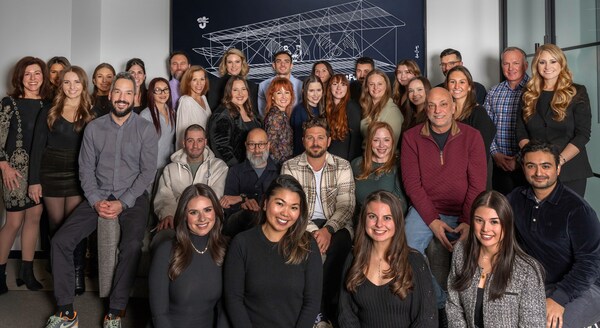
In the News, Marketing Frontiers, Press Releases, Stagwell Marketing Cloud
Apr 02, 2025
The European Commission Expands its Partnership with UNICEPTA by PRophet to Include Media Analysis

Newsletter
Sign Up
NEW YORK, Feb. 8, 2022 /PRNewswire/ — Stagwell (NASDAQ: STGW) announced today the Company will report financial results for the three and twelve months ended December 31, 2021 on Tuesday, March 8, 2022, before the market open.
Stagwell will host a video webcast to review those results the same day at 8:30 AM (ET). To register and view the webcast, visit this link.
A replay of the webcast will be available following the event at Stagwell’s website, https://www.stagwellglobal.com/investors/
Related
Articles
In the News, Investments & Financials, Press Releases
May 08, 2025
STAGWELL INC. (NASDAQ: STGW) REPORTS RESULTS FOR THE THREE MONTHS ENDED MARCH 31, 2025

In the News, Investments & Financials, Press Releases
Apr 22, 2025
Stagwell (STGW) Announces May Investor Conference Schedule

In the News, Investments & Financials, Press Releases
Apr 17, 2025
Stagwell (STGW) Schedules Webcast to Discuss Financial Results for the Three Months Ended March 31, 2025

Newsletter
Sign Up
CONTACT
hello@stagwellglobal.com
SIGN UP FOR OUR INSIGHTS BLASTS
By Josh Beatty, Founder, ARound
Early reactions to Miller Lite’s “Meta Lite Bar” experience – where it will offer virtual beer, games, and a chance to view what would have been its Big Game spot –prove there’s work needed to convince the masses that the Metaverse matters. Steve Colbert ripped into the idea: “Man, I love commercials, but I wish I had to work harder to access them while my avatar drinks this imaginary can of carbonated disappointment.”
While some of his riff is just late-night chum, there are insights about how brands should approach the Metaverse, mixed-reality, and emerging tech that consumers are just beginning to identify and understand. Colbert’s points are top of mind for everyone as big ideas for virtual storefronts, fully immersive VR experiences, and digital avatar ecosystems fill the news.
Two parts of Colbert’s criticism for brands to unravel:
- “Work harder to access” – This is going to be a big barrier to early adoption of Metaverse tech. If consumers don’t find it easy to access brand experiences, they won’t engage. While conditioned consumer behavior is the hardest thing in the world to change (when did you last download an app for something?), the only thing stronger than conditioned behavior is a change to one’s environment. Experiments in AR and mixed-reality, especially powered by mobile, can disrupt and captivate consumers in a memorable and meaningful way. Shared environments with low barriers to access will drive value in this space.
- “While my avatar drinks this imaginary can of carbonated disappointment.” The Metaverse is a shared experience, but virtual reality can be isolating. AR and other tech that allows for shared social experiences will connect us to people and places in exciting and fun ways. While the idea of drinking a digital beer may leave people scratching their heads, if the metaverse dive bar that Miller Lite unveils during the Big Game includes a compelling array of shared content and experiences, the fun consumers are having together in this space will eclipse their initial confusion at the premise.
Many brands will try their hands at Metaversal tech in the coming months. Marketers should learn from early consumer/social reactions to experiments underway at the Big Game and proactively work to solve some of the barriers of consumer adoption in this exciting new space.
Related
Articles
In the News, Marketing Frontiers, Press Releases
May 13, 2025
MULTIVIEW LAUNCHES AUDIENCEVIEW: THE ONLY FIRST-PARTY B2B AUDIENCE DISCOVERY PLATFORM FOR ASSOCIATION MEDIA

Acquisition, In the News, Press Releases
May 06, 2025
Stagwell (STGW) Acquires Experiential Marketing and Creative Agency JetFuel

In the News, Marketing Frontiers, Press Releases, Stagwell Marketing Cloud
Apr 02, 2025
The European Commission Expands its Partnership with UNICEPTA by PRophet to Include Media Analysis

Newsletter
Sign Up
CONTACT
hello@stagwellglobal.com
SIGN UP FOR OUR INSIGHTS BLASTS
Major M&A moves are underway in the gaming space. Microsoft’s acquisition of Activision and Sony’s of Bungie will have repercussions for how brands and advertisers approach the gaming industry, the most lucrative entertainment sector, set to grow from $173B in 2021 to $223B in 2022.
The TL;DR?
Streaming wars? More like gaming wars. Content is king and the platforms with the most enticing portfolio will win the market.
DTC distribution is not just for DTC brands. Cloud gaming is diversifying the strategies brands can use to get the right content in consumers’ hands.
Metaverse on the mind? The capital “M’ is driving recent consolidation but the jury’s out on how deeply gaming brands will dig into Web 3.
By Collin Leirvik, SVP, Head of Gaming, National Research Group
These recent acquisitions signal a similar trend to what we’ve seen across other forms of media: technology (i.e., cloud) provides new methods for brands to diversify their direct-to-consumer distribution strategies. Tethering content to specific hardware devices may still make the best business sense in gaming (for the moment) but is increasingly less essential from a technological standpoint.
In practice, this changes the equation for gaming brands – the goal goes from selling copies of a game or units of hardware to competing to develop complete, desirable, consumer-centric ecosystems that include both content and innovation in direct-to-consumer distribution.
As we’ve seen in the streaming wars most recently, content is king. The platforms that offer the most enticing overall portfolio of content are winning market share. The same is true in gaming: the totality of experiences a gaming brand provides have and likely will continue to form the basis of their brand equity with consumers.
It’s hard to justify limiting the audience of a game that costs hundreds of millions of dollars to develop by tying it to a single platform/install base. It is yet to be seen how these recent acquisitions will be leveraged in terms of content exclusivity, but these trends in the transformation of distribution are clearly a major factor justifying recent acquisitions.
Due to these dynamics, acquiring studios has always been a growth strategy for gaming brands. However, factors in content development somewhat unique to the industry – especially long development lead times, expense, and risk – have held consolidation in check. It’s hard to justify limiting the audience of a game that costs hundreds of millions of dollars to develop by tying it to a single platform/install base. It is yet to be seen how these recent acquisitions will be leveraged in terms of content exclusivity, but these trends in the transformation of distribution are clearly a major factor justifying recent acquisitions.
The metaverse – and its role in allowing gaming brands to drive greater depth of experience and touchpoints with players with their tentpole franchises – is another driver behind recent content consolidation. The gaming industry has long been a leading force in creating dynamic, online social platforms – the core of what many associate with the recently popularized “metaverse” term. The extent to which brands will also be bullish on blockchain, NFTs, and other emergent innovations woven into to the metaverse and Web 3.0 is yet to be seen. But there are signs that many brands are ready to start experimenting.
Related
Articles
In the News, Marketing Frontiers, Press Releases
May 13, 2025
MULTIVIEW LAUNCHES AUDIENCEVIEW: THE ONLY FIRST-PARTY B2B AUDIENCE DISCOVERY PLATFORM FOR ASSOCIATION MEDIA

Acquisition, In the News, Press Releases
May 06, 2025
Stagwell (STGW) Acquires Experiential Marketing and Creative Agency JetFuel

In the News, Marketing Frontiers, Press Releases, Stagwell Marketing Cloud
Apr 02, 2025
The European Commission Expands its Partnership with UNICEPTA by PRophet to Include Media Analysis

Newsletter
Sign Up
Proven digital executives from Hudson MX, Uber, and Stagwell to architect business transformation solutions for in-house marketers
New York, New York – February 2, 2022 – Stagwell (NASDAQ:STGW), the challenger network built to transform marketing, today welcomed three senior executives to lead, develop, and grow products within the Stagwell Marketing Cloud (SMC): Abe Geiger, Chief Product Officer; Elspeth Paige Rollert, Chief Marketing Officer; and Matt Lochner, Managing Director.
The team of proven digital product and marketing leaders will drive SaaS and DaaS innovation for the Stagwell Marketing Cloud, a suite of technology products that supports in-house marketing transformation for modern businesses. The team will incubate new products and growing the existing suite of solutions, which currently spans influencer marketing, audience segmentation, public relations, immersive experiences and brand insights by levering AI, ML and AR.
“With the arrival of Abe, Elspeth, and Matt, the Stagwell Marketing Cloud is in “liftoff” mode. We’re accelerating Stagwell’s focus on product innovation to meet the CMOs’ need for in-house marketing stack solutions,” said Mark Penn, Chairman and CEO, Stagwell. “Whether clients desire a best-in-class integrated marketing team at one of our agencies or a product solution for in-house teams, Stagwell is able to offer the full range of creation and execution services modern marketers need.”
“Today’s brands are facing some of the most exciting technology and product challenges of our time, from the need to scale deep A.I. solutions across global enterprises to new frontiers in mixed-reality, digital content, and the metaverse,” said Geiger. “I’m thrilled to join a network committed to the challenger mindset and pushing innovation across the new disciplines of digital marketing.”
Geiger arrives at Stagwell from Hudson MX, an advertising technology business that provides cloud-based media buying and media accounting solutions. Prior to HudsonMX, Geiger served as VP of Product Development at Legal Shield, and was the Founder and CEO of Shake, a mobile-first legal product for consumers and SMBs.
Rollert previously served as Global Head of Partnership Marketing for Uber, where she provided strategic leadership and global coordination across Uber’s portfolio of brands, including Uber Eats. Prior to that, she held product and analyst roles at Microsoft and Penn Schoen Berland.
Lochner is returning to Stagwell from Harvard University, where he is completing his Juris Doctor. Previously, he served as Vice President, M&A at the Stagwell Group and worked on over twenty of Stagwell’s acquisitions.
The trio joins a slate of recent senior hires at Stagwell across core central departments, including Chief People Officer Stephanie Howley, Chief Technology Officer Merrill Raman, and internal executive promotions across Stagwell’s Brand, Growth, Global Client Services, and Global Recruitment teams.
Stagwell debuted the latest product in the SMC at CES 2022: ARound, a tool helping venues and brands scale AR experiences for live events and retail. To learn more about the SMC, visit stagwellglobal.com.
About Stagwell
Stagwell is the challenger network built to transform marketing. We deliver scaled creative performance for the world’s most ambitious brands, connecting culture-moving creativity with leading-edge technology to harmonize the art and science of marketing. Led by entrepreneurs, our 10,000+ specialists in 20+ countries are unified under a single purpose: to drive effectiveness and improve business results for their clients. Join us at www.stagwellglobal.com.
Related
Articles
In the News, Marketing Frontiers, Press Releases
May 13, 2025
MULTIVIEW LAUNCHES AUDIENCEVIEW: THE ONLY FIRST-PARTY B2B AUDIENCE DISCOVERY PLATFORM FOR ASSOCIATION MEDIA

Events, In the News, Press Releases
May 13, 2025
Stagwell (STGW) Drafts New Picks for SPORT BEACH 2025: Lauren Betts, Myles Garrett, Billie Jean King, Ilona Maher, Brandon Marshall, Katie McCabe, Alex Morgan, Oscar Piastri, Gerard Piqué, Nigel Sylvester, Ian Wright OBE and More Confirmed to Attend

In the News, Investments & Financials, Press Releases
May 08, 2025
STAGWELL INC. (NASDAQ: STGW) REPORTS RESULTS FOR THE THREE MONTHS ENDED MARCH 31, 2025

Newsletter
Sign Up
By
Rico Cipriaso, SVP, Digital Strategy and Transformation
and Eric Ong, VP, Technical Director, Concentric Health Experience
AR and mixed-reality are powerful tools for enhancing visualizations for patients and providers in healthcare marketing.
More immersive digital experiences can drive empathy, helping accurately model experiences and expected outcomes.
Scaling AR experiences to platforms consumers actively engage with is the top executional barrier for today’s brands.
Healthcare brands are ripe for the AR and mixed-reality revolution.
Everyone frets about their health. For someone newly diagnosed with a mispronounceable disease, picking up a prescription from the pharmacy for the first time is the culmination of multiple steps of worry, research, and grappling with challenging content. The pill or injection they receive is a reminder of hope and the possibility of a positive outcome. What if we could reinforce that hope with an experience that truly brings to life the sources of life-changing solutions?
Imagine: a routine scan from your mobile device at the start of your treatment unlocks a window into information about the disease, expected outcomes, and the support you need to get through it. With augmented and mixed-reality, healthcare brands have an opportunity to create dynamic visualizations for patients and providers that arm them with the education to drive better experiences and empathy to drive positive outcomes. AR/VR will help enhance both B2B and B2C efforts.
Imagine: a routine scan from your mobile device at the start of your treatment unlocks a window into information about the disease, expected outcomes, and the support you need to get through it.
Aiding Modern Education
Precision and depth of understanding are essential for healthcare practitioners. With AR and mixed-reality, these professionals’ learning tools can be enhanced with more multi-spatial visualizations of the body, cell and chemical interactions, and more, giving providers the confidence to act decisively in treatment.
We’ve seen that spirit extend beyond university and medical school settings; throughout the COVID-19 pandemic, public health professionals and medical influencers collaborated on mobile AR data visualization to help people better make sense of the large amounts of evolving COVID-19 data. Applying simple AR layers to social content can help bring life to flat charts with 3D animation, ultimately driving a more digestible and interactive educational experience.
Driving Empathy Through Enhanced Experiences
We know emotional appeal is the magic sauce of good marketing. Enabling more immersive healthcare brand experiences in B2B and B2C with mixed-reality can give brands the tools to emulate patients’ experiences, model the impact of new drugs, products, and services, and help translate patients’ lived experiences. In our award-winning work for Sunovion, we leveraged VR to bring Lonhala Magnair’s in-person, interactive “Room to Breathe” to more healthcare providers. We rendered the home of a user of the drug in VR to showcase how each room of the house reflects the product’s unique features, including nigh silent administration, quick nebulization time, and convenient audiovisual feedback. The campaign grabbed the attention of prospective targets in an eye-catching way and helped place them in the patient’s shoes.
These mixed-reality approaches can also arm those suffering from chronic health ailments with tools for better communicating their needs and experiences. Excedrin’s 2016 Migraine Experience VR campaign used mixed-reality to model the audio, visual, and spatial effects a migraine can have on a patient, adding an experiential layer that helped drive added empathy. Their effort went beyond the VR headset experience to include a mobile app version that let anyone share the experience with loved ones. With the world returning to the office from remote work, healthcare brands will have many opportunities to generate compelling mixed-reality content about navigating and advocating for support in this evolving health environment.
Finally, B2B healthcare marketers exhibiting at trade shows can integrate mixed-reality into their product demonstrations and showcases to enhance the persuasive element of their presentations.
What to do?
- Think beyond a standard deliverables list, to envision impact first.
- Seek partners that understand the current martech landscape wand are committed to experimenting with new storytelling methods.
- Always develop a plan and allocate funds for extensive testing.
Exciting possibilities await healthcare brands with mixed-reality, but executional barriers remain, from closed Martech platforms that don’t yet allow AR or VR executions to the difficulty of getting mixed-reality experiences into the hands of target audiences. Rolling out an AR or VR experience now often means introducing a new platform to consumers – and we know consumers find difficulty in leaving an already-familiar walled garden. As a result of this, while the idea behind an experience may be great, brand efforts end up shifting from building more engaging experiences to solving the issue of sourcing new products and tech solutions to make mixed-reality. Realistically, brands will need to create these experiences on apps and platforms their consumer bases already engage with, or the bar is high for scaling adoption.
The good news: more investment in mobile mixed-reality makes this a ripe time to experiment with these new digital marketing tools to ensure your brand is prepared to leverage emerging mediums of storytelling and consumer connections.
Now is the time to stretch your creative possibility and think beyond a standard deliverables list to envision impact first. Being able to experience healthcare solutions is more potent than simply knowing about them – how can you use mixed-reality to drive more effective marketing?
Second, seek partners that understand the current martech landscape and are committed to exploring how newer storytelling mediums unlocked by emerging technology integrate into omnichannel marketing efforts. Be critical about whom you work with: they should be conversant in the potential of mixed-reality while nursing a healthy skepticism for the tactics needed to scale consumer adoption.
This leads to our final advice: always ask your mixed-reality partners to develop to plan and allocate funds for extensive testing. Because of the high engagement barrier inherent in these solutions, you want to ensure your brand comes to your customers with a fine-tuned, new and expansive way of telling your story, absent any kinks in the user experience.
Related
Articles
In the News, Marketing Frontiers, Press Releases
May 13, 2025
MULTIVIEW LAUNCHES AUDIENCEVIEW: THE ONLY FIRST-PARTY B2B AUDIENCE DISCOVERY PLATFORM FOR ASSOCIATION MEDIA

Events, In the News, Press Releases
May 13, 2025
Stagwell (STGW) Drafts New Picks for SPORT BEACH 2025: Lauren Betts, Myles Garrett, Billie Jean King, Ilona Maher, Brandon Marshall, Katie McCabe, Alex Morgan, Oscar Piastri, Gerard Piqué, Nigel Sylvester, Ian Wright OBE and More Confirmed to Attend

In the News, Investments & Financials, Press Releases
May 08, 2025
STAGWELL INC. (NASDAQ: STGW) REPORTS RESULTS FOR THE THREE MONTHS ENDED MARCH 31, 2025

Newsletter
Sign Up
NEW YORK, Jan. 31, 2022 /PRNewswire/ — Today, Stagwell’s (NASDAQ: STGW) PRophet, the first-ever A.I.-driven data-as-a-service (DaaS) platform that predicts earned media interest, sentiment and spread before a story is pitched, released a pay-as-you-go subscription option, providing new individual users immediate access to the platform without hassle and delays of traditional, lengthy corporate purchasing processes. PRophet is a product in the Stagwell Marketing Cloud, a suite of modern business transformation solutions for in-house marketers.
This new pay-as-you-go subscription option is among the first of its kind in an industry plagued by overly expensive, archaic pricing structures that often require long-term commitments. PRophet, which launched the second generation of its platform earlier this month, provides its users access to a smart dataset of more than 100,000 verified journalists from high-authority sources and millions of podcasts.
“It’s all about optionality. Many comms-tech companies require enterprises and agencies to commit to long-term contractual agreements that can get delayed due to the permissions approval process requiring sign-off by executives far removed from the end users who understand the value and urgency of access to platforms like PRophet,” said Aaron Kwittken, Founder/CEO of PRophet. “PRophet’s new pay-as-you-go model removes the middlemen, or any need for a drawn-out financial courtship, offering PR pros throughout the organization, agencies and brands alike, a just-in-time solution to overcome their pressing earned media obstacles. They can skip having to beg their finance or procurement department for an enterprise agreement, and just be able to expense PRophet on a monthly basis instead.”
Through the new pay-as-you-go model, individuals will be able to complete the monthly transaction online using a credit card or through their Venmo account. PRophet is the first company of its kind to process user subscriptions via the secure, modern, mobile payment service.
“Through numerous demos, we’ve heard from PR professionals, representing brands and agencies of all sizes, who ask for a payment option that lessens the upfront financial burden that is so often present in traditional pricing structures,” said Andrew Meranus, Executive Vice President of Revenue for PRophet. “We’re proud to be among the first in our industry to offer an option that allows anyone, including small startups and individual account executives at global PR agencies, the means to gain fast access to the smartest earned media software in the industry.”
For agency and brand representatives seeking a new answer to their earned media dilemma, contact Andrew Meranus or Elizabeth Finch to receive a detailed summary of the PRophet pay-as-you-go subscription model. For more information about the PRophet platform, please visit www.prprophet.ai.
About PRophet
PRophet is the first-ever A.I.-driven data-as-a-service (DaaS) platform designed by and for the PR community that samples past stories to better predict future media interest, sentiment, and spread through natural language processing and machine learning. PRophet is owned by Stagwell Inc., and was founded by marketing industry thought leader and entrepreneur Aaron Kwittken alongside former political strategist, technologist, and author Mark Penn, Chairman and CEO of Stagwell Inc. To learn more, visit www.prprophet.ai.
Media Contact
Adam Wise
KWT Global
awise@kwtglobal.com
Related
Articles
In the News, Marketing Frontiers, Press Releases
May 13, 2025
MULTIVIEW LAUNCHES AUDIENCEVIEW: THE ONLY FIRST-PARTY B2B AUDIENCE DISCOVERY PLATFORM FOR ASSOCIATION MEDIA

Events, In the News, Press Releases
May 13, 2025
Stagwell (STGW) Drafts New Picks for SPORT BEACH 2025: Lauren Betts, Myles Garrett, Billie Jean King, Ilona Maher, Brandon Marshall, Katie McCabe, Alex Morgan, Oscar Piastri, Gerard Piqué, Nigel Sylvester, Ian Wright OBE and More Confirmed to Attend

In the News, Investments & Financials, Press Releases
May 08, 2025
STAGWELL INC. (NASDAQ: STGW) REPORTS RESULTS FOR THE THREE MONTHS ENDED MARCH 31, 2025

Newsletter
Sign Up
By Stagwell Insights
CONTACT
hello@stagwellglobal.com
Marketing Frontiers is a new series from Stagwell exploring the methods, mediums, and messes modern marketers will grapple with over the next decade as they chart transformation in the discipline. This January, Stagwell is exploring the new frontiers of Augmented Reality.
Retail happens at the convenience of the consumer.
AR can change when and where brands build experiences, the discovery-to-purchase funnel, and how brands navigate the blended shopping experience.
Three trends will lead retail AR: Try Before You Buy, New Discovery Dimensions, and the Gamification of Retail.
The next decade of retail will no longer unfold on a brand’s terms. Digital transformation and the blending of in-person and physical experiences means commerce happens at the consumer’s convenience: on mobile devices, in between meetings, on the subway, and everywhere in between. This pivot will fundamentally change when and where brands build experiences, the discovery-to-purchase funnel, and the need for solutions that adopt the functional convenience of brick-and-mortar retail across any digital platform.
This change is more of an opportunity than a challenge. Mobile AR in retail has unlocked three trends worth capitalizing on for brands seeking creative strategies for adopting AR across their retail experience.
Try Before You Buy
Apparel and home goods have fine-tuned the use of mobile AR to “try before you buy,” allowing consumers to scale clothing sizes to their figure using their cellphone’s cameras or gauge whether a futon will fit in their apartments. Brands that haven’t sought ways to activate mobile AR yet should jump on the trend. Those who have should look for opportunities to push beyond rendering individual products in mixed-reality to build entirely virtual closets and storefronts, in line with the experiments brands like Kohl’s, FaceCake, and Snap have pioneered.
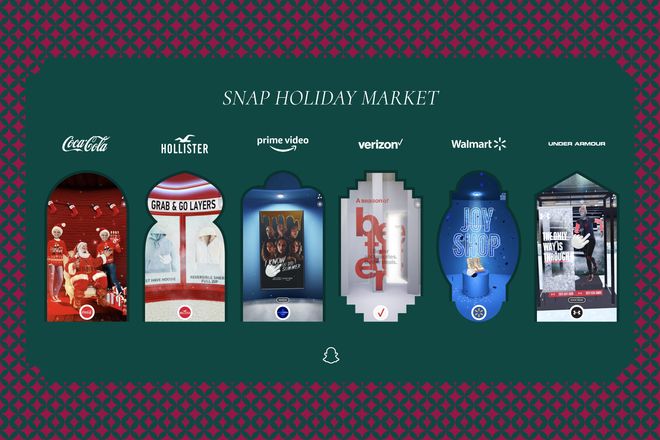
Give consumers the ability to purchase, try on, see reviews, engage with a customer specialist, and more without leaving the comfort of their homes, and you crack the convenience code. Imagine the world of possibilities for more addressable marketing, influencer integrations, and social commerce.
AR isn’t just landscape for apparel and home goods. Food and CPG brands might foray into more AR content experiences that illuminate how their products can be blended to create exciting recipes. Picture Kraft or Nestle emblazoning their packages with QR codes that activate AR chef’s assistants on mobile to teach you the perfect way to blend pantry staples to make a complicated feast.
New Dimension for Discovery
The importance of convenience for consumers in the digital era doubles as an attention and discovery problem. Besieged by brand messaging, consumers have difficulty finding relevant and valuable marketing and promotions when they desire them. Those with smaller marketing budgets struggle to make noise in the din, barred from prime advertising real-estate. AR unlocks a new layer or dimension of marketing that can power intelligent, sustainable content opportunities to aid today’s brands in discovery. Location-specific AR overlays can add flair to major promotions, bring virtual participants closer to the brick-and-mortar experience, and transform common areas like subway trains or city parks into rich canvasses for marketing integrations.
Savvy businesses might partner with regional publishers for guerilla OOH activations, placing QR codes at major city throughways that open up an AR directory of local retailers, shopping centers, and other nearby experiences. This would allow consumers to access an engaging universe of directional content while cutting expenses for regional media distribution and carving out more stages for branded placement and authentic advertising.
Gamification of Retail
The trend towards experiential retail underscores a key point about today’s consumers: digital experiences are never wholly individual. It’s why AR shows such promise for live events and retail. If you can add a layer of shared competition to your retail experiences, you can power deeper consumer engagement. Sporting apps that pit peers against each other to meet fitness goals could enhance that experience with an AR layer that allows for connection with nearby runners, displays local challenges like conquering a particularly steep hill, and rewards users with a coupon or digital assets.
In-store brands might roll out limited-time activations like scavenger hunts to encourage shoppers to engage with as many AR-powered product displays as possible to unlock additional savings at the counter. A retailer might also add an AR layer encouraging added engagement with overstocked items, bring product displays to life with virtual influencers rendered in AR, or use augmented reality content to add local color about in-store products. With experiments in NFTs and other virtual tokens and commodities, brands have an array of new tools at their disposal to encourage and reward hybrid engagement.
What to do?
Our verdict: now is the time to experiment with and fine-tune brand-relevant strategies for working AR layers through the marketing stack. Mixed reality can be a serious investment. Brands should look for existing partners who can help deliver AR technology via platforms consumers are already engaging with to minimize the start-up costs of a new foray into AR.
The question of budgets and investment aside, our advice about AR mirrors our advice about many new marketing frontiers: before running blindly in their pursuit, ensure the technology is additive to the digital layer of your brand. Ask yourself how AR will add dimensionality or a compelling new flavor of experience to the products and services you provide your consumers. We are bullish that AR’s value is creating shared experiences and enhancing convenience for today’s consumers. If your AR strategy doesn’t accomplish those two goals, you may be better off experimenting with other modern digital marketing tools.
Finally, AR and the industry-wide focus on the metaverse is an opportunity to push innovation and creativity further than ever before. Don’t just replicate content and experiences in AR; redefine them. View augmented reality as an opportunity to unlock new ways to connect and communicate with your brand’s consumer base and zealously chase a more creative future.
Related
Articles
In the News, Marketing Frontiers, Press Releases
May 13, 2025
MULTIVIEW LAUNCHES AUDIENCEVIEW: THE ONLY FIRST-PARTY B2B AUDIENCE DISCOVERY PLATFORM FOR ASSOCIATION MEDIA

Events, In the News, Press Releases
May 13, 2025
Stagwell (STGW) Drafts New Picks for SPORT BEACH 2025: Lauren Betts, Myles Garrett, Billie Jean King, Ilona Maher, Brandon Marshall, Katie McCabe, Alex Morgan, Oscar Piastri, Gerard Piqué, Nigel Sylvester, Ian Wright OBE and More Confirmed to Attend

In the News, Investments & Financials, Press Releases
May 08, 2025
STAGWELL INC. (NASDAQ: STGW) REPORTS RESULTS FOR THE THREE MONTHS ENDED MARCH 31, 2025



